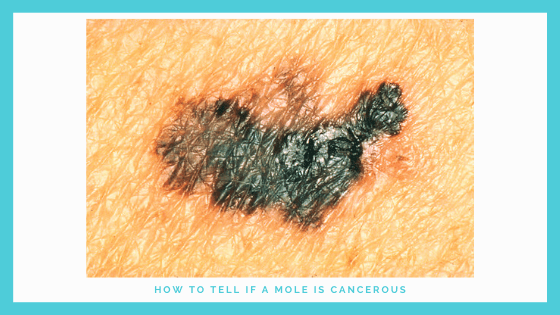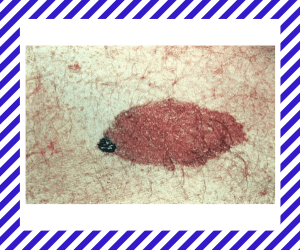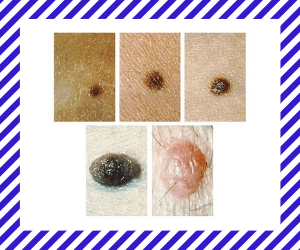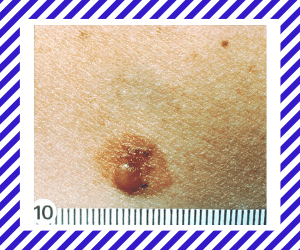Have you ever noticed an area of growth on your skin and wondered what it was?
Well, this can be a nevus popularly known as a mole.
A mole is an area of growth on human skin. Some moles can be present at birth, while others will develop over time as you grow.
Many moles that usually develop during adulthood are related to sun exposure and melanin production effects. Here is more on how to tell if a mole is cancerous.
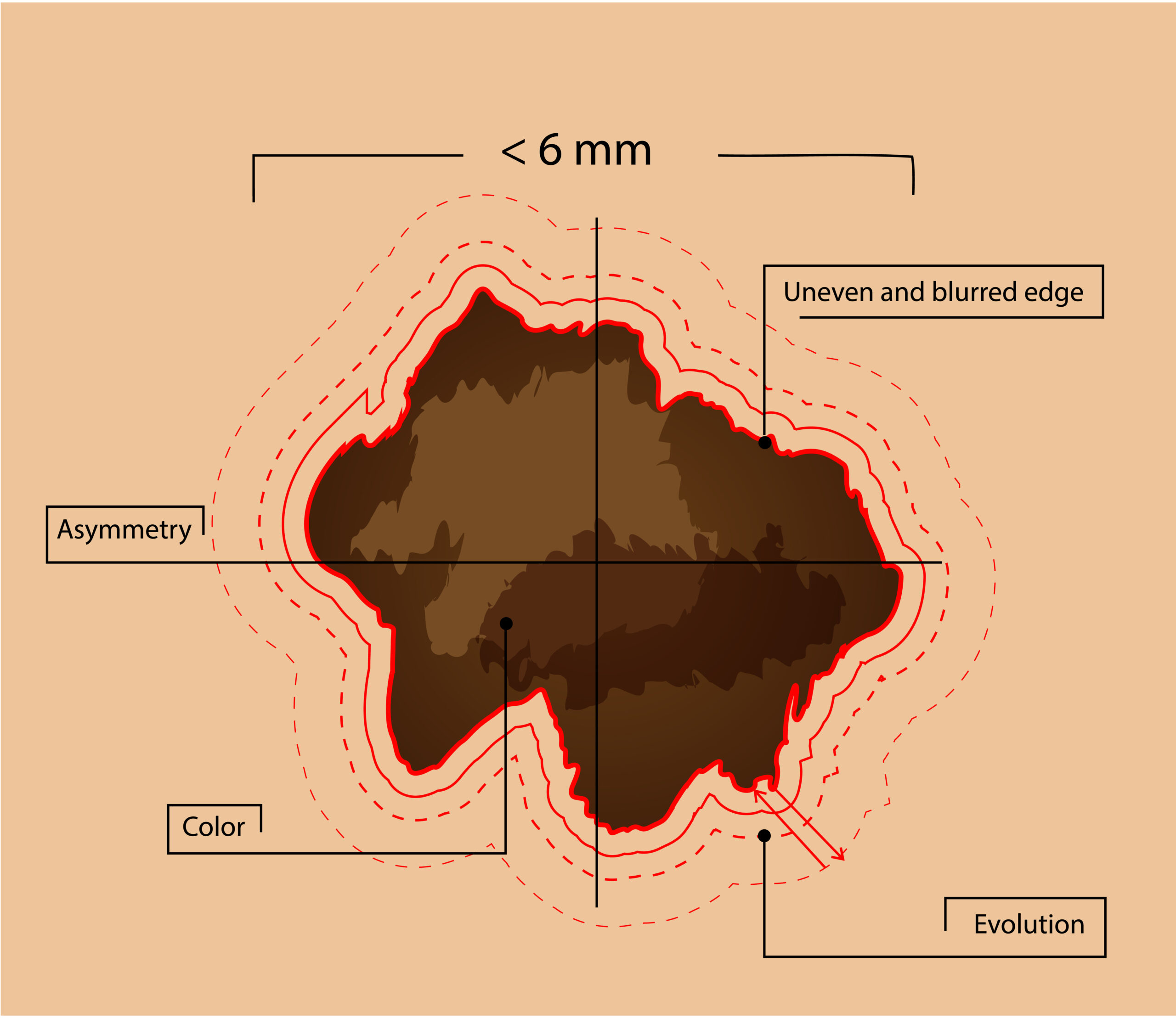
While mostly considered brown, moles come in different colors, including pink, red and flesh-colored. Most of the moles are just benign. However, keeping a keen eye on the changes that might indicate cancer growth is essential. Here we discuss how to tell if a mole is cancerous.
Types Of Moles
Moles exist in three main types which include:
Congenital moles
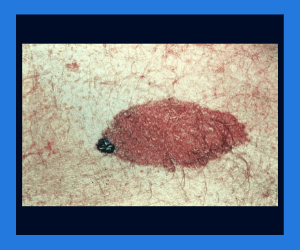
Congenital moles are usually present at birth and affect one out of 100 babies, according to the American Osteopathic College of Dermatology (AOCD). They are generally flat, differ in color, and are not likely to become cancerous.
Acquired moles
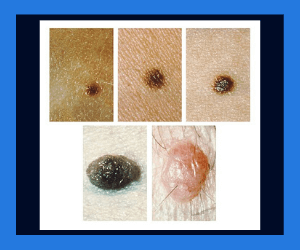
Interestingly, Acquired moles refer to those moles that develop as one grows. Most of these are brown and are usually caused by sun damage. They are round in shape and do not change significantly even as you age. However, acquired moles can darken with age but will not necessarily turn into melanoma.
Atypical moles
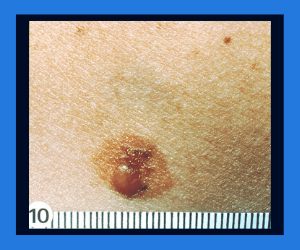
Unlike the acquired and congenital nevi, atypical moles have a greater risk of becoming cancerous. AOCD estimates that one out of ten people in the United States has a minimum of one atypical nevus.
This means closely monitoring the moles for any atypical features is essential. Taking part in monthly skin check-ups and annual full-body examinations by a skilled dermatologist is important for early melanoma and abnormal detection.
These irregular moles can occur anywhere on the body. However, they are mostly on sun-exposed skin parts, including the shoulders and upper back. This, therefore, means that the risk of melanoma is usually greater on frequently sun-exposed skin like the upper back, neck, and head.
On the other hand, women have a higher risk of atypical moles, specifically on their lower calf and legs. Therefore any changing or new irregular mole on a woman’s lower leg warrants immediate medical attention and evaluation.
What Causes Moles?
In simple terms, moles are mainly caused by abnormal cell growth in your skin. Nonetheless, abnormal growth does not necessarily mean cancer. The moles can occur in all human races and skin colors, with the American Academy of Dermatology (AAD) estimating an average of 10 to 40 moles per individual.

Some are born with moles, as seen with congenital nevi, while others develop moles during adulthood. Sun exposure and other drivers associated with aging skin are considered the leading cause of nevi in adults.
The Difference Between Cancerous Moles And Regular Moles
As a prevention measure against melanoma development considered the deadliest form of skin cancer. You need to pay proper attention to your skin, particularly if you have something on your skin resembling a mole. Taking note of any characteristic changes in your moles will ensure you get to eliminate the possibility of skin cancer on time.
The “ABCDEs of Melanoma
Early detection and how to tell if a mole is cancerous are critical for melanoma. Dermatologists have devised a helpful visual guide that aids in differentiating benign and melanoma moles. The simple acronym helps in outlining mole cancer irregularity. The “ABCDEs of Melanoma,” therefore, refers to five visible indications of potentially cancerous moles. If your moles exhibit these attributes, then it may undoubtedly be melanoma.
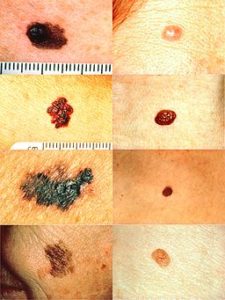
A
Asymmetry, which means that the mole’s sides are not the same.
B
Border. Are the outside edges of the mole scalloped, jagged, or irregular?
C
Color. Is your mole color inconsistent, with blue, red, white, brown, or black shades?
D
Diameter. Is the mole bigger than 6mm in diameter? This is approximately the size of a pencil eraser. Keep in mind that melanoma may not necessarily start this big. If your mole seems to be enlarging, it’s a call to action.
E
Evolving. Monitor if the mole is changing in color size and shape.
These features play a vital role in how to tell if a mole is cancerous. While some are just small cosmetic imperfections on your skin, you should not neglect the fact that they can still be dangerous. A benign mole will not exhibit the above features. In case of any changes and developments with your moles, ensure you seek medical help as soon as possible.
How To Treat And Safely Remove Cancerous Moles
Once a cancerous mole is identified, it has to be removed immediately to prevent the spread of cancer beyond your skin to other body parts. There are different ways in which this can be done.
Treatment for cancerous moles is surgical mole removal, where they are cut out,” says DR. Weinstocks. Important to note is how to remove a mole depends on several factors, including the mole size, its location, and how deep it penetrates.
For the small moles that do not require stitches once removed, your doctor can do a shave excision. This involves numbing your skin and cutting the mole out of your skin using a small knife. A punch biopsy can also apply whereby a device similar to a cookie-cutter is used to get rid of the mole.
For a more profound and larger painful mole, surgery becomes the best option. During the surgery, the mole, together with the healthy skin portion surrounding the cancer mole, is cut out.
The best approach to preventing skin cancer is to always use skin products, including Tommy Timmy Smoother Skin Laser, regularly for suspicious-looking moles. Having a better understanding of the sign of cancerous moles makes it possible for you to identify them earlier and make an appointment with your doctor.

